Tags: #Breastcancerscreening #Breastcancerinkenya #stage4breastcancer #selfbreastexam #cancerfreewomen
According to Daily Nation newspaper published on October 23, 2013, Mary Namata, a Ugandan lady stayed with breast lesion for 4 years before she could seek medical help. The wounds became too painful for her to live like that and it was until that point she went to seek medical help. By the time she went to the hospital, Mary was diagnosed with stage 4 breast cancer. To be exact, Mary had stage 4 fungating breast cancer where the cancer wounds had penetrated the skin and had opened outside the breast.
In Kenya, hundreds of thousands of women tune on the news and hit on google searching for free breast cancer screening in their areas. This is a very good sign because it implies that the number of women recognizing October as breast cancer month in Kenya is increasing. It is at “creating” awareness level that we must start to control this African women slayer overshadowed by HIV/AIDS & Malaria.
But, is it wise to risk your life waiting for free breast cancer screening, mammograms? Kenya has less than 15 mammogram machines primarily in private settings, meaning, chances of actually getting a free mammogram without a sponsor are very low. Notice that Kenya has far more mammogram machines than all other East African states combined.
Here is the good news, you can start the fight against breast cancer early by doing Breast self Exam (BSE) starting age 20. To carry an effective self breast exam, this is what you should know: –
Learn how your normal breast feel and look:
The key to early detection of breast cancer is the key to survival. Success in Self Breast Exam (BSE) is dependent on knowing more about your normal and your risk factors. That way, if you detect anything abnormal, you would be able to notice it and take the necessary action…Mammogram!
To learn your normal breast, it is recommended you check your breast at least once a month in front of a mirror. You should expect to see
- Breasts that are in usual shape, size and color. In most women, breast that are equal in size. Should you doubt any of these, get a clinician to take a look.
- Breast that are evenly shaped without any disfigurement or distortion. No dimpling, puckering or bulging of the skin.
- Nipples that are even, well contoured without swelling, redness or inwardly inverted. Any unexpected discharge from the nipples must be reported immediately to a doctor for further evaluation.
Know the warning signs of breast cancer: Memorize them!
- A lump, hard knot or thickening inside the breast or armpit(s).
- Any wound, pimple, boil or blister occurring on your breast or underarm area
- Swelling, warmth, redness or darkening of the breast
- Change in the size or shape of your breast
- Dimpling or puckering of the skin
- Itchy, scaly sore or rash on the nipple or anywhere on the breast. Do not ignore Itchiness!!
- Pulling in of your nipple or other parts of the breast
- Nipple discharge of any colour (not milk for expectant or breast feeding mothers) that starts suddenly. High alert if the discharge is from one breast, comes out without squeezing, is clear or bloody.
- New pain in one spot that doesn’t go away, or pain that cannot be related to any traumatic event.
Know your risk factors:
- Family history of breast cancer: If anyone in your family (father or mother’s side) has breast cancer or died of breast cancer, consider yourself a high risk. This is because family lineage in Africa is poorly defined
- Overweight or obese. Being overweight in Africa is seen as a sign of wellbeing but in actual sense, this increases breast cancer risk
- Being female: Meaning, every woman should consider themselves as breast cancer risk factor.
- Increase in age. The more you age, the higher the risk
- Beginning of menstrual cycles too early, before age 12
- Giving birth to a first child after age 35. This increases your breast cancer risk factor
- Having never been pregnant: Women that have never been pregnant have a much higher risk of breast cancer
- Drinking alcohol: Women that drink alcohol are at higher risk of breast cancer than those who doesn’t
Do not wait until you can get a free breast cancer screening in Africa. It may never happen and waiting could put your life and your family in danger. Remember without women in Africa, our societies would collapse. A woman is the single most important figure in our society. You are important and worth everything in the world. Be safe!

 Many women undergoing breast cancer treatment or those who have gone through breast cancer treatment may get painful sexual intercourse. Lets lay it on the table and talk about another common hurdle breast cancer heroes encounter. breast cancer treatment approaches like surgery, radiation therapy, chemo-therapy and estrogen modulation therapies can greatly alter sexual experience.
Many women undergoing breast cancer treatment or those who have gone through breast cancer treatment may get painful sexual intercourse. Lets lay it on the table and talk about another common hurdle breast cancer heroes encounter. breast cancer treatment approaches like surgery, radiation therapy, chemo-therapy and estrogen modulation therapies can greatly alter sexual experience. My 35 years old had been fighting breast cancer well over five years. This time, her best ever fighting spirit was on all time high. Her breasts were scarred, full of flaps and patches. Some of the scars show they had dehisced and repaired leaving heartbreaking scars. But that was not the toughest battle yet.
My 35 years old had been fighting breast cancer well over five years. This time, her best ever fighting spirit was on all time high. Her breasts were scarred, full of flaps and patches. Some of the scars show they had dehisced and repaired leaving heartbreaking scars. But that was not the toughest battle yet. The heart rate kept on going up and orders to give her fluids and Morphine were executed. My eyes could not hold tears anymore and I became a bitter empathetic nurse taking care of a near helpless patient. Few hours later, I sent a specimen for complete blood count to the lab and her white cells count was near ZERO. We put the patient on neutropenic precautions, simply meaning anyone is a danger to the patient as she had no immune defense left in her system.
The heart rate kept on going up and orders to give her fluids and Morphine were executed. My eyes could not hold tears anymore and I became a bitter empathetic nurse taking care of a near helpless patient. Few hours later, I sent a specimen for complete blood count to the lab and her white cells count was near ZERO. We put the patient on neutropenic precautions, simply meaning anyone is a danger to the patient as she had no immune defense left in her system. My courage, empathy and bitterness rose to the threshold that I could not hold anymore. I placed another call to the already upset oncologist, this time with demands, not requests. A frustrated voice answered the phone and I started…
My courage, empathy and bitterness rose to the threshold that I could not hold anymore. I placed another call to the already upset oncologist, this time with demands, not requests. A frustrated voice answered the phone and I started…
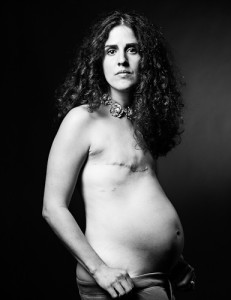 “Breast cancer is not a Pink Ribbon”. Please say that out loud and tell it to your friends…
“Breast cancer is not a Pink Ribbon”. Please say that out loud and tell it to your friends…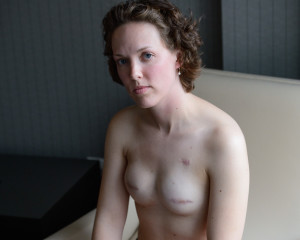 Breast is the greatest symbol of femininity in all mammals. In many mammals, the only way to tell the physical difference between a male and a female is the mammary glands AKA breast, or udder in four-legged animals. Breast cancer specifically affects the greatest symbol of femininity tearing down and shattering many women definition of beauty. Cancer treatment, even worse takes away the most prominent feminine features of human beings like hair, eye lashes, breast, skin and nails.
Breast is the greatest symbol of femininity in all mammals. In many mammals, the only way to tell the physical difference between a male and a female is the mammary glands AKA breast, or udder in four-legged animals. Breast cancer specifically affects the greatest symbol of femininity tearing down and shattering many women definition of beauty. Cancer treatment, even worse takes away the most prominent feminine features of human beings like hair, eye lashes, breast, skin and nails.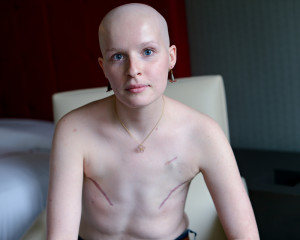
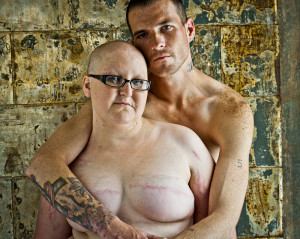 Breasts are normally obscured in non-pornographic photography/media but David defied the norms and used his photography to show how women look after mastectomy. Rather than demoralizing, David’s photography is empowering and creating a
Breasts are normally obscured in non-pornographic photography/media but David defied the norms and used his photography to show how women look after mastectomy. Rather than demoralizing, David’s photography is empowering and creating a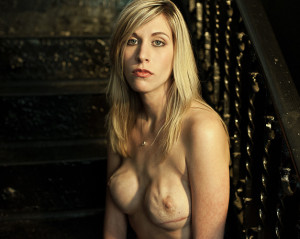 To me, these SCAR project pictures show a new shift in society’s acceptance of a tribe of scarred, breastless and one breasted women. It is a high time we start accepting SCARRED women are just as beautiful since 1 in 8 women will be diagnosed with breast cancer at some point in their lives. This new tribe inspired by David is growing and will at some point in future became the norm, just the same way we no longer see pregnant women as unattractive. This exposure will help women to accept what we might not be able to change. Perhaps fashion designers will soon start making bras for women with one breast and accept them as “normal.” What if not having breasts or having one breast became acceptable? What if mastectomies and scarred breast are seen as a symbol of honor and strength? What if the society could tone down the breast obsession with breasts just a little bit and appreciate David work on SCAR project for pioneering the new “normal” for breast cancer fighters and survivors?
To me, these SCAR project pictures show a new shift in society’s acceptance of a tribe of scarred, breastless and one breasted women. It is a high time we start accepting SCARRED women are just as beautiful since 1 in 8 women will be diagnosed with breast cancer at some point in their lives. This new tribe inspired by David is growing and will at some point in future became the norm, just the same way we no longer see pregnant women as unattractive. This exposure will help women to accept what we might not be able to change. Perhaps fashion designers will soon start making bras for women with one breast and accept them as “normal.” What if not having breasts or having one breast became acceptable? What if mastectomies and scarred breast are seen as a symbol of honor and strength? What if the society could tone down the breast obsession with breasts just a little bit and appreciate David work on SCAR project for pioneering the new “normal” for breast cancer fighters and survivors?

